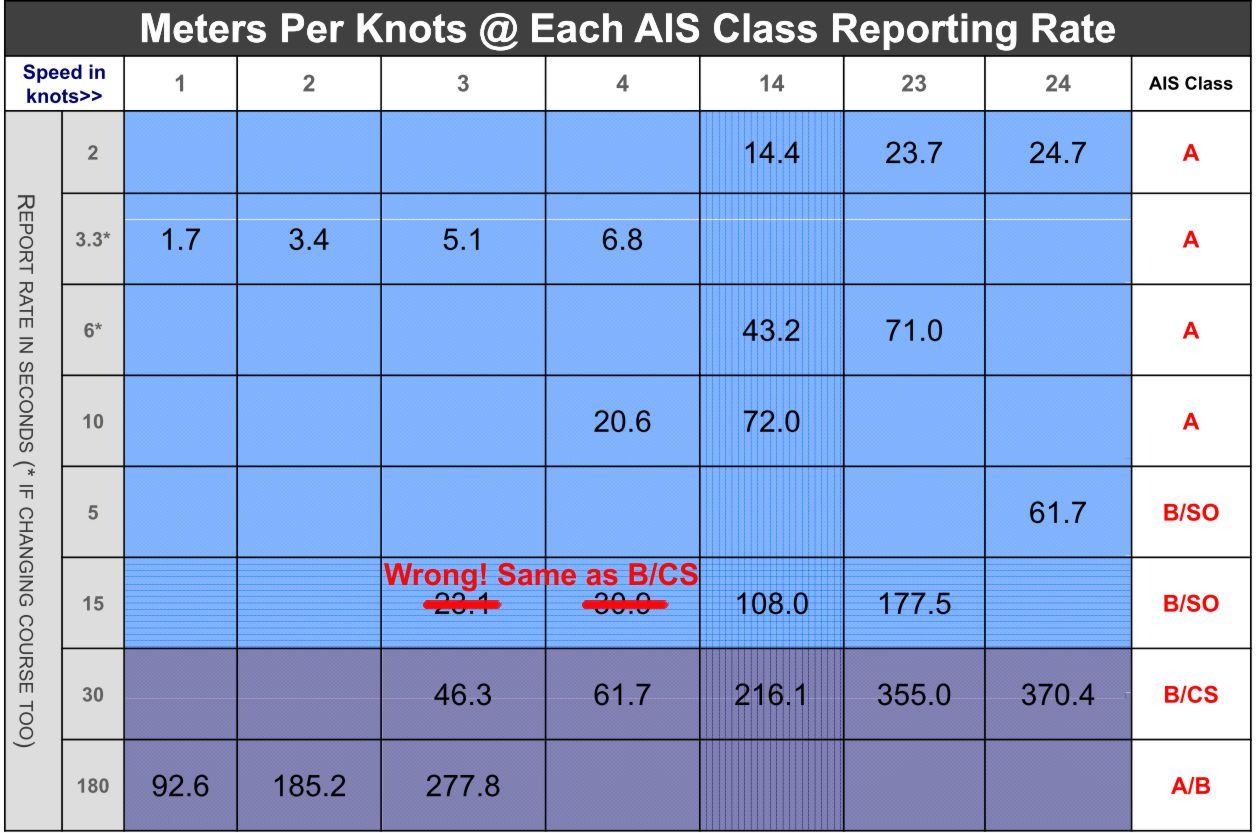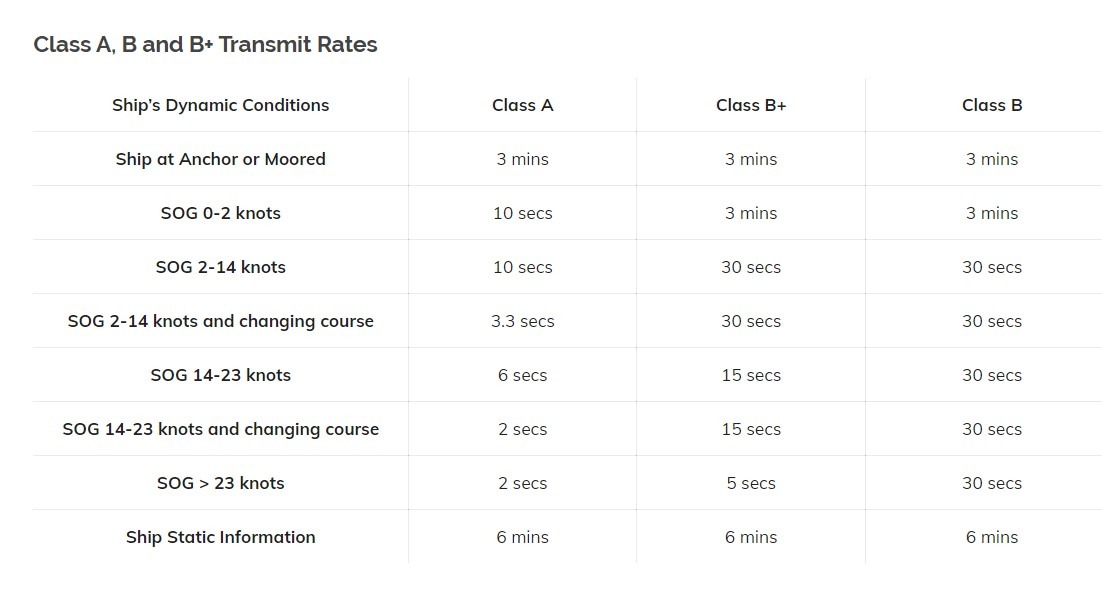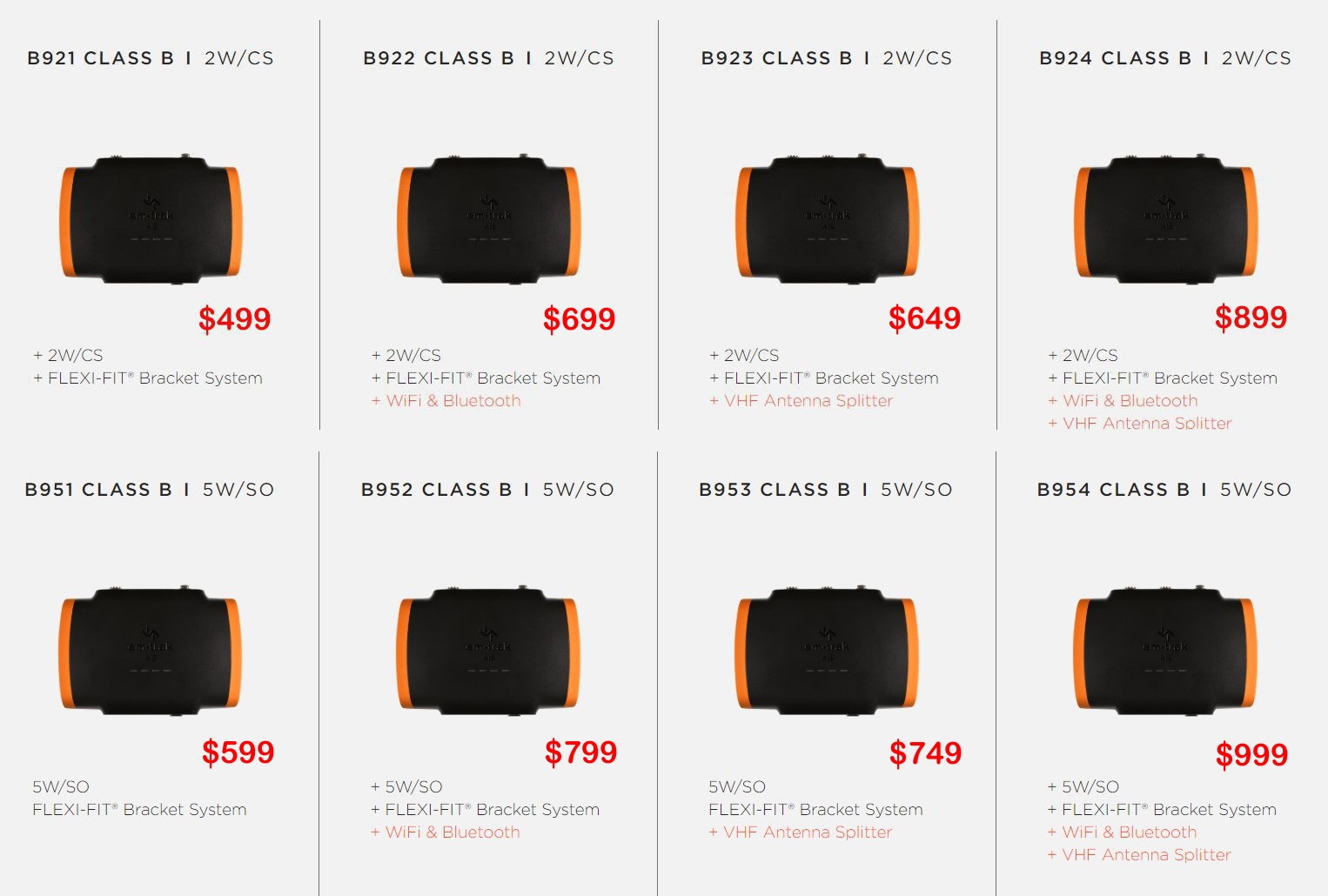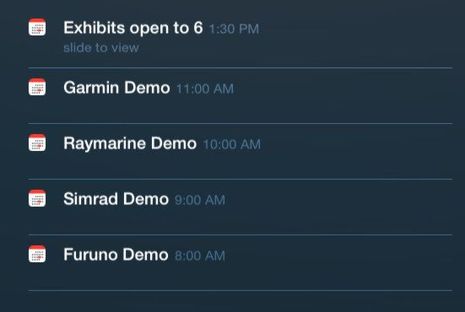Class B AIS SO & CS transmit rates, truth vs confusion

Don’t always believe what you read, even on Panbo, and even when it’s sourced from the U.S. Coast Guard’s normally authoritative NavCen website! I was recently quite humbled to realize that the uncorrected version of the table above does not make sense with the rest of my 2015 entry about then-new Class B/SO AIS, and that the mistakes may have been confusing skippers choosing an AIS transceiver ever since. Deciding between CS and SO is still an issue, so let’s look closely at the real reporting rate differences.
The original Carrier Sense (CS) Class B only transmits dynamic data like your boat position, heading, and speed every 30 seconds no matter how fast you’re going (over 2 knots). And you may have noticed the resulting target jumpiness, especially when also using radar — which refreshes at least every 2.5 seconds, since 24 rpm rotation is minimal — to track a Class B AIS vessel. As correctly shown in the table above, a Class B/CS target doing 23 knots will travel 355 meters (0.2 nautical miles) between 30 s data reports, and that’s why its more realtime radar image will appear to outpace its AIS icon until — jump! — the next AIS transmission.
So perhaps the major feature of SOTDMA Class B AIS is a faster transmit rate if you’re going at least 14 knots, and thus my 2015 entry presumes that the expensive early Class B/SO transceivers were particularly well suited to fast boats.
But in retrospect, that presumption was not well supported. The specific Class B/SO reporting rate info I cited with another NavCen table — “Either every 5, 15 or 30 s based on speed (2-14, 14-23, >23 kts) Every 3 min. when < 2 kts.” — is not exactly crystal clear. And the “Meters per knots…” table definitely showed a 15-second B/SO rate at 3 and 4 knots, a mistake that went unnoticed by readers and your humble editor alike.
In other words, a credulous reader carefully researching AIS options could conclude that improved Class B/SO transmit rates are also good for slow boats. Sorry!

In fact, looking at that the old “Meters per…” table with fresh eyes got me questioning my own rate presumptions, and I was glad to find Digital Yacht’s excellent White Paper on New Class B “SOTDMA” technology, which includes a lot more of interest than the well laid-out transmit rate comparison above.

Moreover, I checked DY’s work against the ITU M.1371-5 standard, which all AIS transceivers are manufactured and tested to (and a major reason that the system works so well around the globe). While the table above may not be ideal for normal boaters, it’s also where I learned that Class B/SO uses an “Increased reporting interval” in certain cases of AIS congestion (see footnote 3).
And that’s a good example of how complex the AIS standard actually is. If you browse through M.1371 — also known as the “Technical characteristics for an automatic identification system using time-division multiple access in the VHF maritime mobile band” — you’ll see how challenging it is for, say, the USCG personnel who run NavCen to filter out and explain what’s important to boaters.

In fact, the USCG agreed that the “Meters per…” table is flawed, thanked me for the head’s up, and intends to fix the old AIS comparison PDF that still pops up in “Class B AIS SO vs CS” searches. I hope they’ll also fix the “30 s if > 23 kts” typo in the current AIS Comparison by Class PDF found on NavCen’s normally authoritative AIS FAQ. And they really should review that Class B/SO estimated cost of $2000.

While $599 is a nice new low retail price for a high-quality Class B/SO transceiver, and the Em-Trak B921 won’t ship until February, the cost of SOTDMA AIS technology had already been rapidly declining. For instance, the fuller featured Si-Tex MDA-5 Class B/SO which has performed well in my testing — and is manufactured, like Em-Trak, by SRT Marine Systems — can be purchased for about $725.
So are we at the point where even a frugal slow boat owner should consider Class B/SO when choosing a first AIS? (Be aware that SO also offers more output wattage and the SOTDMA protocol is more likely to be seen in heavily congested AIS areas.) And shouldn’t a fast boat be upgraded to SO so that other vessels see it closer to where it actually is?
Of course there’s a lot more to choosing a Class B AIS transceiver that will do all that you want. And that’s well illustrated by the eight new Em-Trak 900 series models I collaged above, and by the Vesper Cortex that’s also due out soon. 2020 is shaping up to be a big year in AIS, and now we’re all clear about the reporting rates, right?














Ben, am I correct in thinking the second row in your em-trak collage should have been the B95x SOTDMA products?
Ben, I wouldn’t feel too bad about that oversight – as I recall, either MEJ or Professional Boatbuilder had errors in their table at the time Class B/SO was introduced as well, and had to print a correction the following month. However, the screenshot of the Em-trak model lineup & pricing is a little misleading as well. According to their site, it’s the 950 series, not the 920 series as pictured, that includes the 5W/SO technology…. FYI.
Argh! But thank you, gentlemen. I will now fix the Em-Trak illustration!